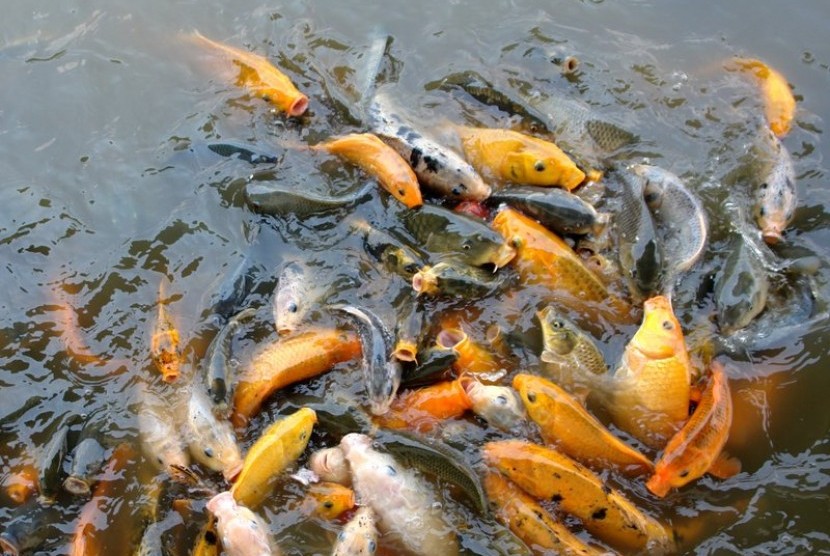Mercury is one of the dangerous heavy metals because as ions or certain compounds, it is easily absorbed by cells and tissues in the body. In the cells, these ions can inhibit the function of various enzymes and can even cause cell damage and cell death. Mercury is often considered an aquatic pollutant with a negative effect on aquatic organisms, especially fish. The life cycle and reproductive capacity of fish are very vulnerable to the danger of mercury. Many changes occur in the reproductive system of fish contaminated with mercury, including the irregular structure of the testicular tubules, low quality of fish sperm and low success rate of fertilization of sperm and eggs and inhibited embryo development in fish eggs.
The presence of mercury in the waters can occur due to natural factors, such as volcanic activity carried by rainwater into the river or from weathering of rocks and human factors due to anthropogenic activities, such as gold mining, fossil fuel burning, paper processing, and other activities. The source of mercury pollution flows along the river, from the upstream to downstream to the sea through the coast. On the other hand, many fish farmers use river or reservoir water as a medium for the maintenance and cultivation of freshwater fish.
Mercury enters the body of the fish through the water absorption process through the gills and food chain processes, then accumulates through the bioaccumulation and biomagnification processes in the body tissues. The presence of this metal compound can disrupt the fish’s reproductive system by reducing sperm quality, especially the sperm speed and duration of movement (motility) and sperm fertility. High levels of mercury trigger cytotoxicity, which is mediated by free radicals that cause cell damage. Cell damage caused by mercury as a poison can produce radical compounds. The presence of free radical compounds in cells results in the formation of lipid peroxidation. Lipid peroxidation occurs because of the oxidation process in unsaturated fatty acid compounds, which are important components of cell membranes. It causes changes in membrane structure, cell membrane permeability, and disrupts the function of cell membrane transport. When this occurs in sperm cells, it can cause various metabolic disorders, damage, and death of sperm cells in fish.
At a level of 0.5 ppm, mercury compounds can reduce the length of the group and individual sperm motility. Sperm motility decreases because sperm membranes, which are rich in unsaturated fatty acids, are very susceptible to free radical attacks. Increasing levels of mercury accelerate the formation of fast radical compounds. High levels of radicals can also damage sperm DNA (40%) and affect the integrity of sperm mitochondria, which play an important role in the metabolic process to produce ATP energy supply. The inhibited production of ATP disrupts electron flow and transport which is needed in cell metabolism, so that cell activity cannot run properly, reducing flexibility and movement of sperm tails. Furthermore, mercury tied to the sperm tail will affect the sperm movement and lower its motility.
Mercury also affects the viability of fish sperm. High levels of mercury increase toxicity, which causes a lack of nutrients for sperm to survive. The existence of these radical compounds also stimulates the occurrence of sperm death (apoptosis), which begins with the activation of the caspase enzyme, which can reduce sperm survival. Furthermore, the presence of mercury also reduces the ability of fish sperm to fertilize the egg. In the process of fertilization, combining the sperm nucleus with the egg nucleus occurs in the cytoplasm to form a zygote. Not all fertilized eggs by sperm exposed to mercury can develop and hatch into fish larvae. The results showed that 0.5 ppm mercury had reduced the success of sperm fertilization. When mercury levels are increased (5 ppm), the sperm fertility and embryonic development percentage are low compared to the control group (without mercury), which show a higher success rate (96%).
With the end of this study, it can be found exposure to mercury (0.5 ppm) can reduce the fish sperm quality (movement and viability) and sperm fertility.
Author: Alfiah Hayati
Full article available at:
https://www.sciencedirect.com/science/article/pii/S1687428519300391





